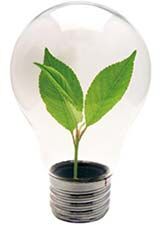Medioambiente
Driven and dedicated to help our world
Earth Day
CommScope employees around the world celebrate Earth Day by participating in activities aimed at preserving our environment and conserving natural resources for future generations.
Every April 22, you will find CommScope employees making a difference by: planting trees, shrubs and flowers, cleaning up local parks, beaches and areas near our facilities, participating in local awareness campaigns and drawing contests, carpooling, using public transit and bicycling to work, recycling waste, batteries and household e-waste, installing LED lighting to conserve energy, eating locally grown produce in facilities’ canteens and conserving water.
CommScope organizes a global contest for employees and their families focused on raising environmental awareness and creating more sustainable communities.
Greenhouse Gases
CommScope has voluntarily reported our greenhouse gas emissions to the US Department of Energy since 2002 and in 2008 transitioned to the CDP to report Scope 1 and Scope 2 emissions using calculation tools and guidance from the Greenhouse Gas Protocol.
We have already surpassed our 2020 goal to reduce greenhouse gas emissions from our large manufacturing facilities (>70.000 sq. ft.) by 65% measured in metric tons of carbon dioxide equivalents and achieved a 77% decrease from the 2008 baseline, by:
- Reducing our reliance on the blowing agent C318 in cable production with a view toward introducing an alternative agent with a much lower global warming potential (GWP)
- Optimizing compressed-air system settings
- Adjusting equipment setup
- Using lighting systems with LEDs and light sensors
- Replacing high-GWP air-conditioning refrigerants with better alternatives
We continue to strive for even better performance and further reduce our greenhouse gas emissions. Check our progress here.
Energía

Chemicals
CommScope takes the utmost precautions to mitigate this risk and avoid any adverse environmental effects related to its use of chemicals. Our facilities have established comprehensive measures to prevent spills and releases, including clear identification of chemicals, safe storage, handling, movement, use, recycling or reuse and disposal procedures. All production sites maintain spill kits or similar clean-up materials to swiftly address any potential emergency situation. Facility managers also train and maintain on-site emergency cleanup teams and keep in close communication with local authorities.
Waste
Our efforts are focused on diverting non-hazardous waste from landfills. To track our progress, we use a metric called beneficial reuse (BRE)—the ratio of total volume of non-hazardous recycled or reused waste to the volume of all non-hazardous waste. When one of our facilities achieves 95 percent BRE, it is deemed to have achieved “zero waste-to-landfill” status. We are expanding our recovery and recycling efforts, reducing our disposal costs and decreasing our reliance on natural resources.
Check our progress here.
Water
Out of respect for the environment and to improve the health of our employees, we continue to decrease the amount of water consumed by our facilities. We have recently brought new focus to this effort in facilities all over the world.
- In Goa, India, our teams created a rainwater harvesting system capable of capturing roughly 66 million liters each year, removing any need from public water supplies. We also installed an in-house purification system at the facility to provide clean drinking water for all employees. This system helps eliminate thousands of plastic bottles annually.
- Our team in Agrate, Italy, distributed mugs to all employees and offers glasses for visitors. This action alone saves an estimated 33.000 plastic bottles and 33.000 plastic cups every year. This approach was also adopted by most facilities around the world.
We continue to study the ways we use water, and look for ways to use less.
